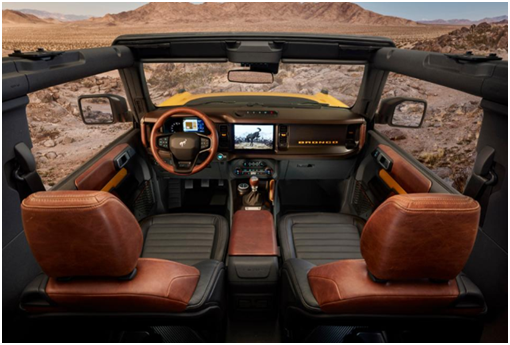
Charles R. Goulding and Ryan Donley delight in the 3D printing opportunity emerging from Ford’s reintroduction of the Bronco.
To compete with the very successful Jeep brand, Ford has reintroduced its Bronco brand. Ford has made extensive use of 3D printing in all of its products for both design and production. Concurrent with vehicle release, Ford is offering 200 consumer choice accessories, many of which have been 3D printed. The new greatly improved Ford 150 is drawing showroom traffic, which should aid Bronco sales.
Bronco fans and 3D printing enthusiasts should revisit the existing legacy Bronco 3D printed offerings for additional ideas.
The Bronco Returns
After a 25-year hiatus, the Bronco returns with a plethora of new features, technology, and design work that is becoming highly anticipated since Ford made the announcement. The design work of the Bronco was largely done with 3D scanning of the first generation to provide influence for the next generation. As a result, Ford has been able to explore various iterations, including offering seven different Bronco specs with various options to add. The mentioned array of accessories, Ford is offering will utilize their 3D printing capabilities similar to the work they will be doing with the new Shelby Mustang GT500. The wide range of customization opens up a unique experience for the rebirth of the SUV as the ability to 3D print numerous parts and components will assist maintaining the retro Bronco feel and look while integrating new age technology and appeal to fans new and old.

3D printing and similar activities related to vehicle parts and accessories may be eligible for the Research and Development (R&D) Tax Credit, which is briefly described below.
The Research & Development Tax Credit
Whether it’s used for creating and testing prototypes or for final production, 3D printing is a great indicator that R&D Credit eligible activities are taking place. Companies implementing this technology at any point should consider this benefit.
Enacted in 1981, the now permanent Federal Research and Development Tax Credit allows a credit that typically ranges from 4%-7% of eligible spending for new and improved products and processes. Qualified research must meet the following four criteria:
- Must be technological in nature
- Must be a component of the taxpayer’s business
- Must represent R&D in the experimental sense and generally includes all such costs related to the development or improvement of a product or process
- Must eliminate uncertainty through a process of experimentation that considers one or more alternatives
Eligible costs include US employee wages, cost of supplies consumed in the R&D process, cost of pre-production testing, US contract research expenses, and certain costs associated with developing a patent.
On December 18, 2015, President Obama signed the PATH Act, making the R&D Tax Credit permanent. Beginning in 2016, the R&D credit can be used to offset Alternative Minimum tax for companies with revenue below $50MM and, startup businesses can obtain up to $250,000 per year in payroll tax cash rebates.
Conclusion
The Ford Bronco brand has a rich history of success. It is good to see it back in the stable with a myriad of 3D printing opportunities.
